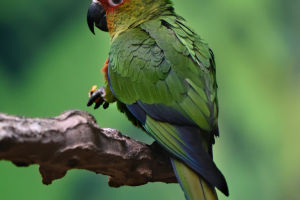Swans are very sacred creatures in people's eyes, and many people call the love between swans the supreme love.
Because male swans will only have mating behavior with one female swan in their lifetime, and these two swans will raise their offspring together and accompany their offspring to thrive together.
There are many different swans on earth, and the trumpeter swan is a very peculiar swan that has attracted the attention of many researchers.
Why does the trumpeter swan have a name like that? What does the trumpeter swan have to do with trumpets? If you have listened to their call, you will know how apt the name is, its call is too much like the sound made by the trumpet.
In the eyes of many people, the color of the swan must be white, but the trumpeter swan is an exception.
Although the body hair color is white, the trumpeter swan's beak color is black, which can form a very sharp contrast with their white fur.
In addition, the size of the trumpeter swan is also relatively large, larger than the average common Swan, making it a very unique swan.
The trumpeter swan was once widely distributed in North America but was hunted and killed in large numbers, and by 1935, there were less than 70 swans left in the United States.
Fortunately, there are still a few thousand surviving in Alaska and Canada, and after decades of conservation, the number of swans has increased to more than 10,000 in 2000.
By 2010, it is estimated that there are more than 45,000 swans. Hunting of trumpeter swans is now prohibited throughout the United States.
The trumpeter swan prefers wide lakes and shallow waters with abundant food, such as lakes, ponds, and slow-flowing rivers rich in aquatic plants, especially in coniferous forest zones, preferring birch forest zones and forest-free plateau lakes and ponds, feeding on aquatic plant leaves, stems, seeds and rhizomes, and its long bill can even dig food hidden under 0.5 meters of silt.
Like other swans, the trumpeter swan is usually a "lifelong companion" and can often be seen swimming in pairs on lakes or with their young.
Both males and females nest together and raise their chicks together. Their nests are often so large that the female will even pluck her feathers and place them in the nest to provide a spacious and comfortable living environment for the young. Needless to say, the love of swans is indeed sacred and desirable.


